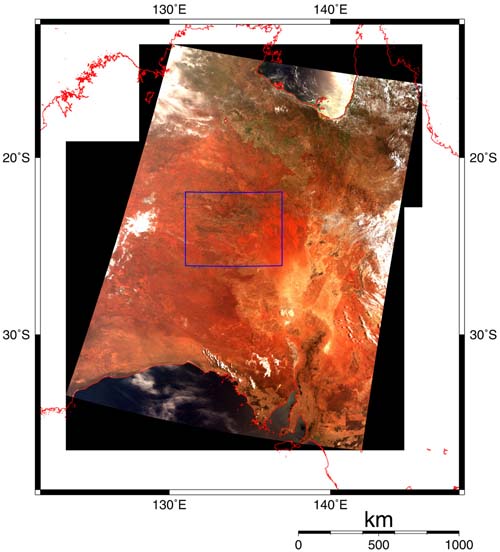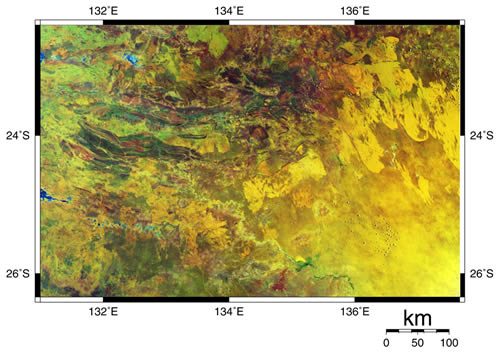|
|
18-Feb-2003
Burning hot Australia
» See Larger Image (1000×1124pixels:207KB)
The image is a so called true color composite, which renders colors similar to those as seen
by the human eye, generated by displaying GLI spectral channel 22 (660 nm) in red, channel
21 (545 nm) in green and channel 20 (460 nm) in blue.
The image was acquired at 10:00 (JST) on February 6, during the second check-out period for GLI.
The data were recorded using the on-board Optical-disk Data Recorder (ODR), which is an
experimental high data-rate, high capacity Magneto-Optical data storage device.
The ODR allows ADEOS-II to acquire and store large data volume also over areas which cannot be
transmitted directly to the ground receiving station in Japan.

» See Larger Image (1000×708pixels:202KB)
Areas appearing yellow-green or brown are generally sedimentary rock, which rich in iron oxide.
The blue or blue-green parts in east-west direction are mainly carbonate rocks, while green
typically indicates vegetation.
The yellowish Simpson Desert covers the south-eastern part of the image, with sand dunes
identifiable by their linear appearance.
A GLI ground validation site is maintained close to Alice Springs for calibration and validation
of the GLI instrument.
This image was derived by using spectral channels 29 (2210 nm), 23 (825 nm) and 20 (460 nm),
corresponding to short-wave infrared, near-infrared and blue, respectively.
This channel combination is often used for geological resources survey, and equivalent to the
Landsat TM bands 7, 4, 1 assignment.
The GLI sensor is designed for frequent global monitoring, and with 6 channels at 250 metre
resolution, it is well adapted for characterisation of the Earth's surface, its vegetation
and soils.
|